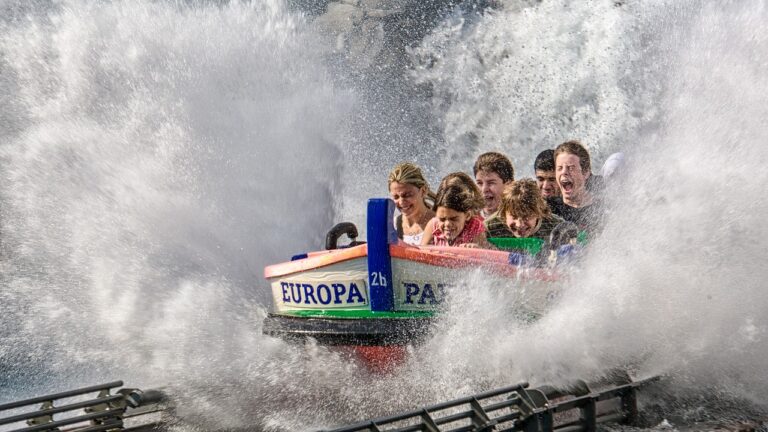The Evolution of Film Narration Techniques
11xplay sign up, india 24 bet login, skyinplay.com login:Film narration techniques have evolved significantly over the years, transforming the way stories are told on the big screen. From silent films with intertitles to the rise of voice-over narrations and complex non-linear storytelling, filmmakers have continually pushed the boundaries of storytelling techniques to create immersive and engaging narratives.
In this article, we will explore the evolution of film narration techniques, highlighting key milestones in the history of cinema and discussing how filmmakers have used innovative techniques to captivate audiences and heighten the storytelling experience.
The Rise of Silent Films: The Silent Era
In the early days of cinema, films had no synchronized sound, leading to the rise of silent films. During this era, filmmakers relied on intertitles, written text displayed on the screen, to convey dialogue, setting, and other essential information to the audience. Silent films were accompanied by live music, sound effects, and sometimes spoken narration to enhance the viewing experience.
The Birth of Voice-Over Narration: The Golden Age of Hollywood
With the advent of sound technology in the late 1920s, filmmakers began incorporating voice-over narration into their films. Voice-over narration allowed filmmakers to provide essential exposition, character insights, and internal monologues, enriching the storytelling experience for the audience. Classic films like “Sunset Boulevard” and “Double Indemnity” utilized voice-over narration to great effect, adding depth and complexity to the characters and their motivations.
The Emergence of Non-Linear Storytelling: New Wave Cinema
In the 1960s and 1970s, filmmakers embraced non-linear storytelling techniques, challenging traditional narrative structures and experimenting with fragmented chronology. Directors like Jean-Luc Godard and Francois Truffaut pioneered this approach in the French New Wave movement, using jump cuts, flashbacks, and multiple perspectives to tell stories in innovative ways. Films like “Breathless” and “Jules and Jim” exemplified the creative possibilities of non-linear storytelling, breaking conventions and redefining the cinematic language.
The Influence of Documentary Filmmaking: Direct Cinema and Cinema Verite
Documentary filmmakers have also played a crucial role in the evolution of film narration techniques, influencing fiction filmmakers to adopt a more naturalistic and immersive approach to storytelling. Direct Cinema and Cinema Verite movements in the 1960s and 1970s emphasized observational storytelling, eschewing scripted dialogue and narration in favor of capturing raw, authentic moments as they unfold. Filmmakers like Frederick Wiseman and D.A. Pennebaker revolutionized the documentary genre, blurring the line between fiction and reality and inspiring a new wave of filmmakers to embrace realism in their storytelling.
The Digital Revolution: CGI and Visual Effects
The advent of digital technology in the late 20th century transformed the filmmaking landscape, allowing filmmakers to push the boundaries of visual storytelling through CGI and visual effects. Films like “Avatar” and “Inception” showcased the power of digital tools in creating immersive worlds and mind-bending visuals, enhancing the storytelling experience and captivating audiences in new and exciting ways. The integration of CGI and visual effects has enabled filmmakers to realize fantastical visions and push the boundaries of what is possible in storytelling.
The Future of Film Narration: Virtual Reality and Interactive Storytelling
As technology continues to advance, filmmakers are exploring new frontiers in storytelling through virtual reality (VR) and interactive storytelling. VR films like “Carne y Arena” and “Traveling While Black” transport audiences into immersive, 360-degree environments, inviting them to experience stories in a whole new way. Interactive storytelling projects like “Bandersnatch” and “Telling Lies” empower audiences to make choices that impact the narrative, blurring the line between viewer and participant and revolutionizing the storytelling experience.
FAQs:
Q: What are some key elements of effective film narration?
A: Effective film narration relies on strong storytelling, compelling characters, and innovative techniques that engage and captivate the audience. From voice-over narration to non-linear storytelling, filmmakers have a range of tools at their disposal to create immersive and memorable narratives.
Q: How has technology influenced film narration techniques?
A: Technology has revolutionized film narration techniques, enabling filmmakers to push the boundaries of visual storytelling through CGI, visual effects, and digital tools. The digital revolution has opened up new creative possibilities, allowing filmmakers to create immersive worlds and realize fantastical visions on the big screen.
Q: What are some upcoming trends in film narration?
A: Virtual reality and interactive storytelling are emerging trends in film narration, offering audiences new ways to experience stories and engage with narratives. As technology continues to evolve, filmmakers are exploring innovative approaches to storytelling that blur the line between viewer and participant, shaping the future of film narration.
In conclusion, film narration techniques have evolved significantly over the years, from silent films with intertitles to the rise of voice-over narrations and non-linear storytelling. Filmmakers have continually pushed the boundaries of storytelling techniques, embracing new technologies and innovative approaches to create immersive and captivating narratives that resonate with audiences. As we look to the future, the possibilities for storytelling are endless, with virtual reality and interactive storytelling offering exciting new avenues for filmmakers to explore and engage audiences in groundbreaking ways. The evolution of film narration techniques is an ongoing journey, driven by creativity, innovation, and the desire to connect with audiences on a deeper, more profound level.







